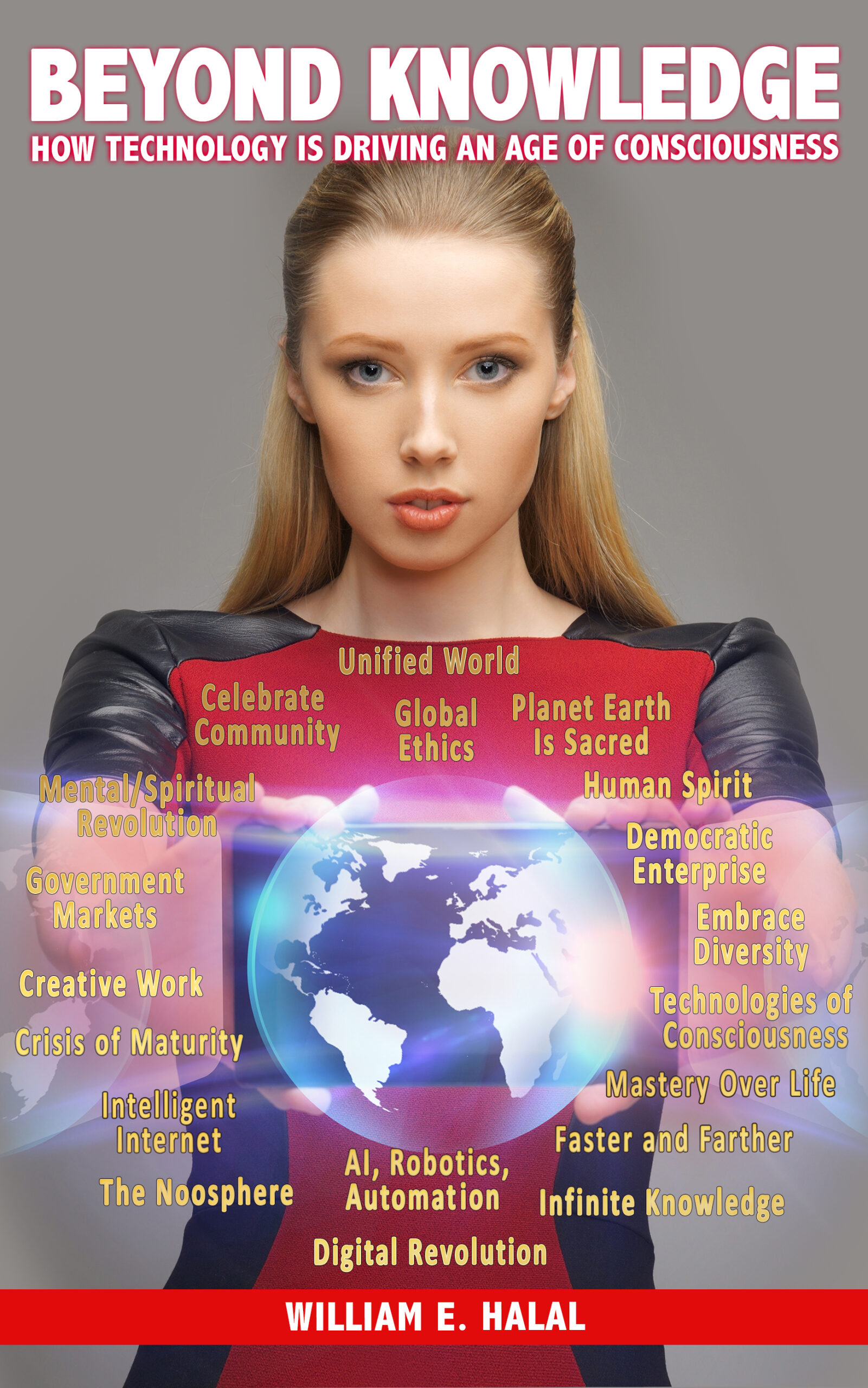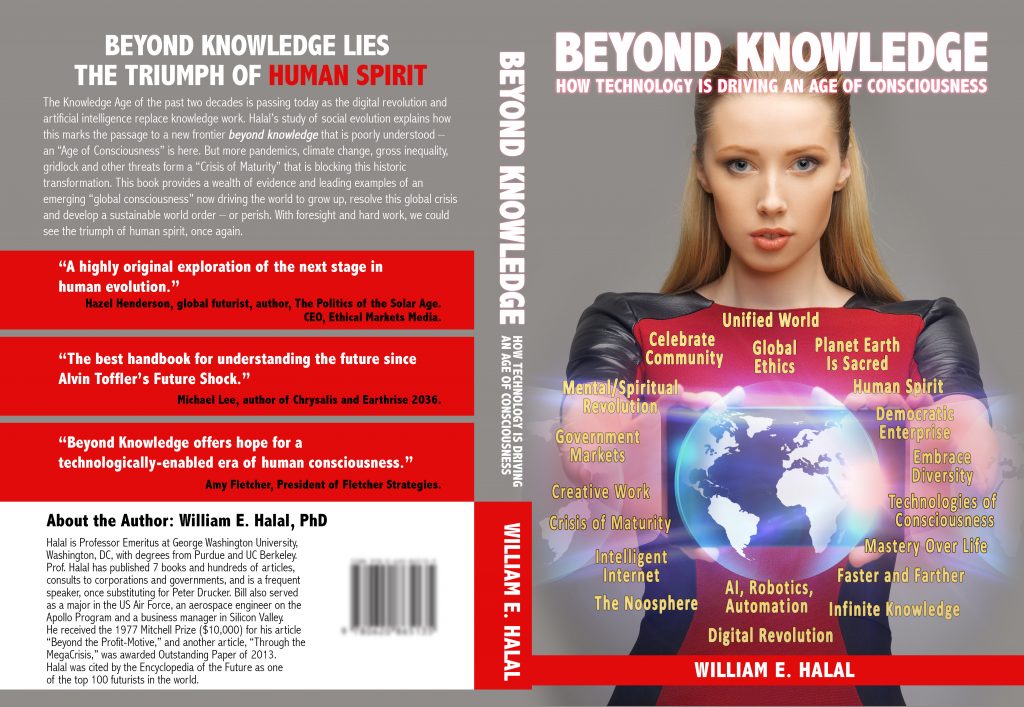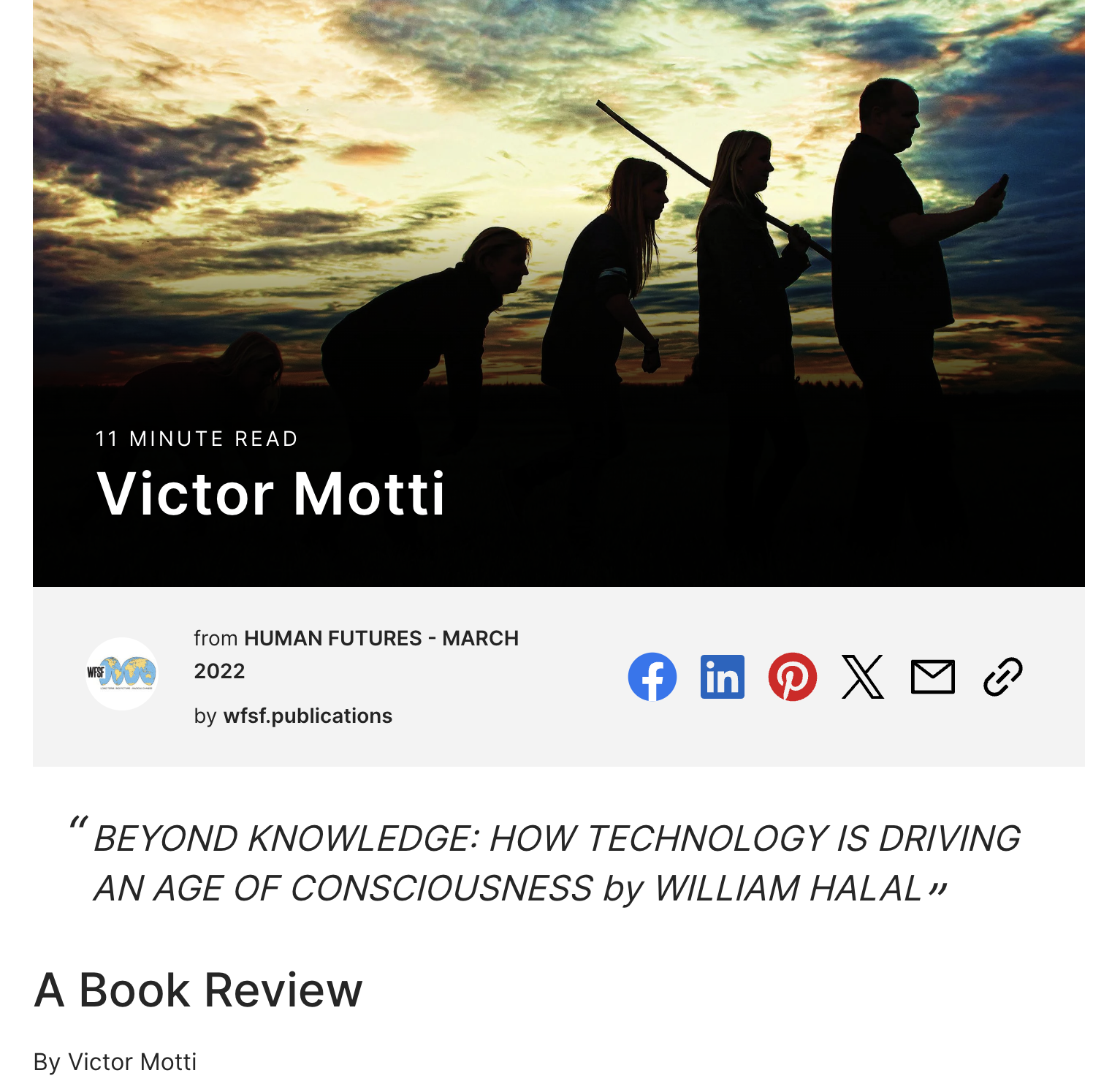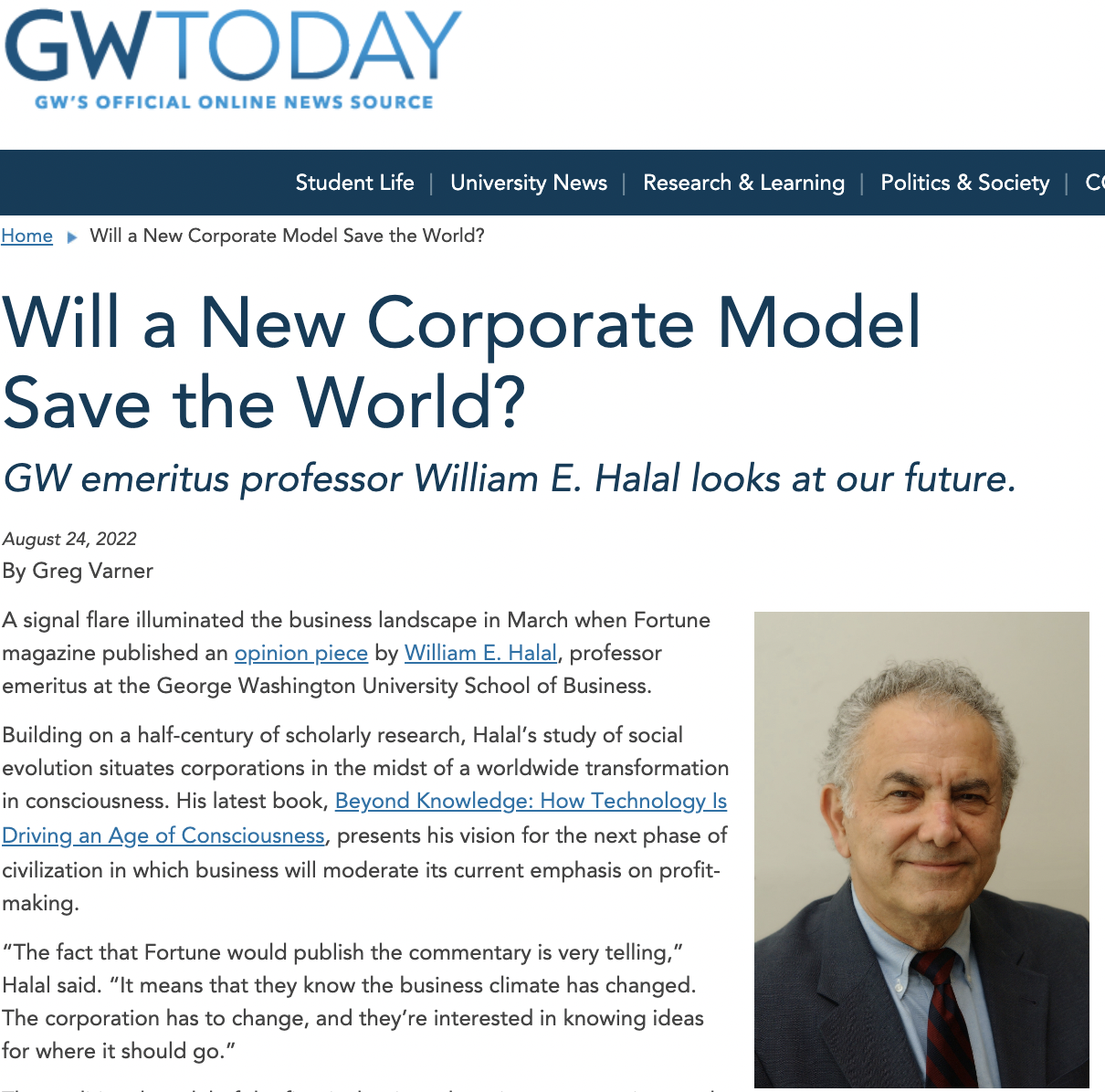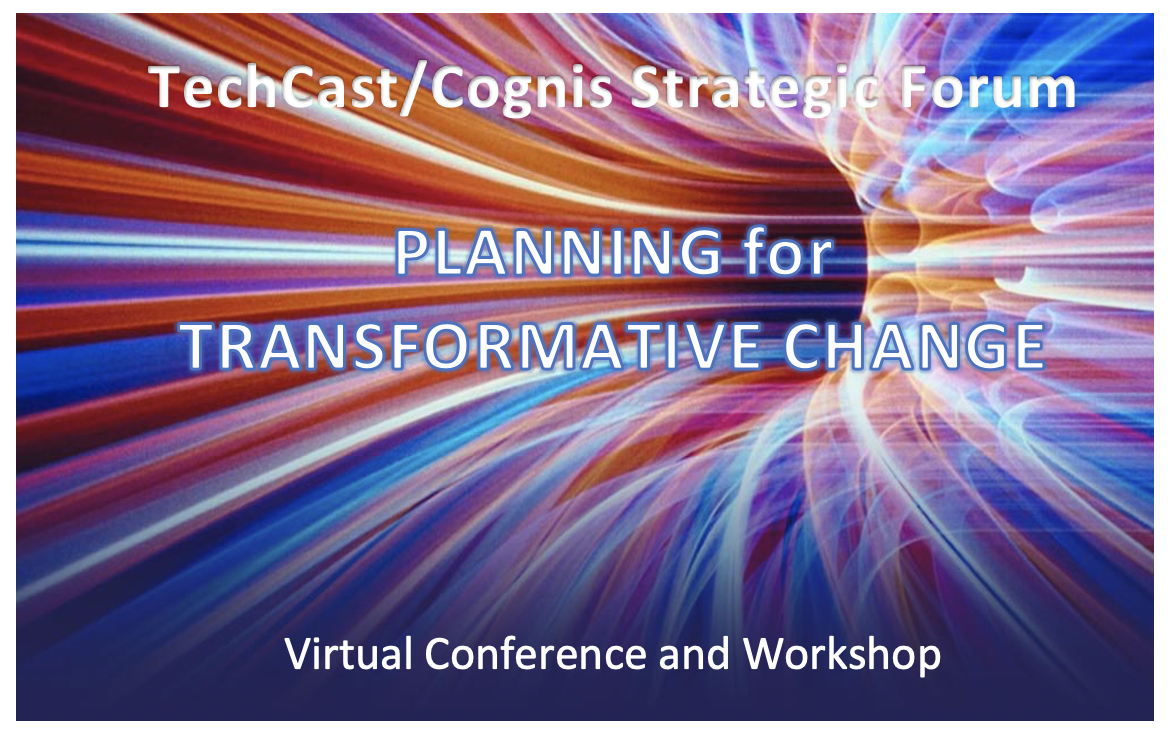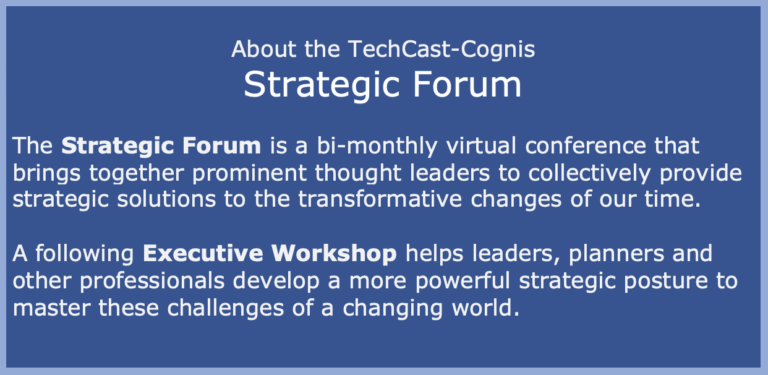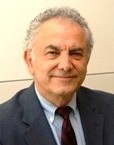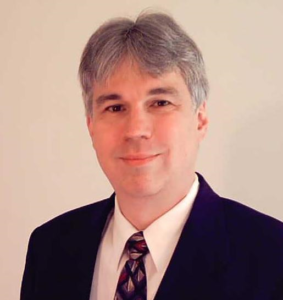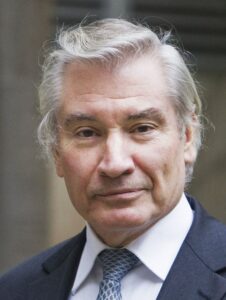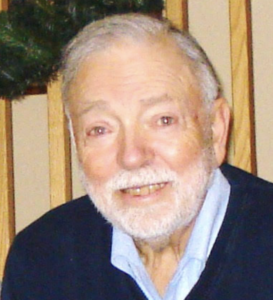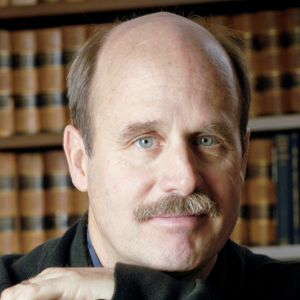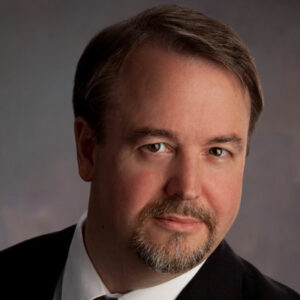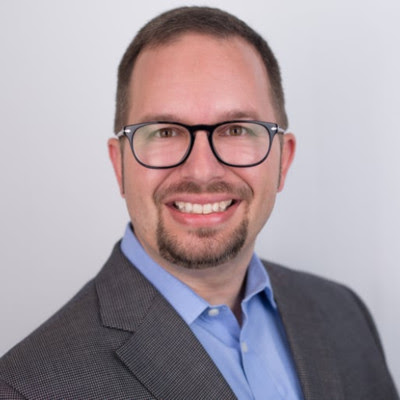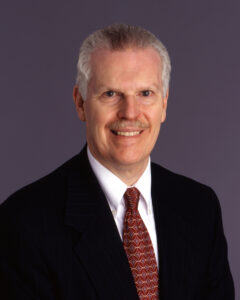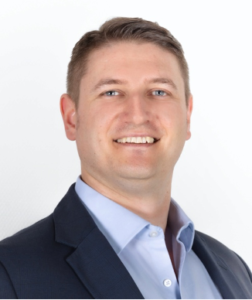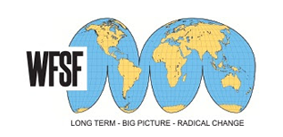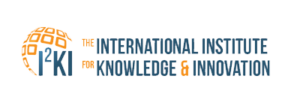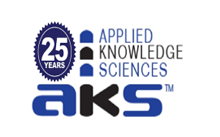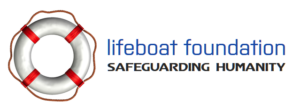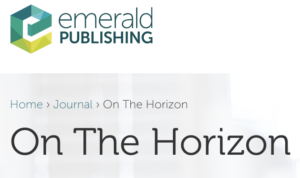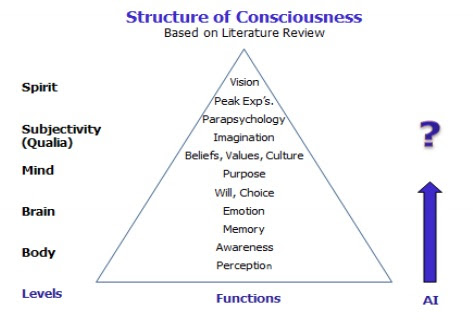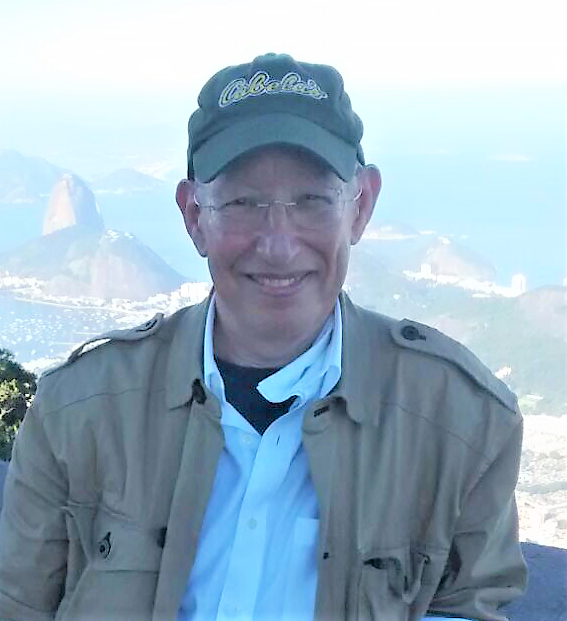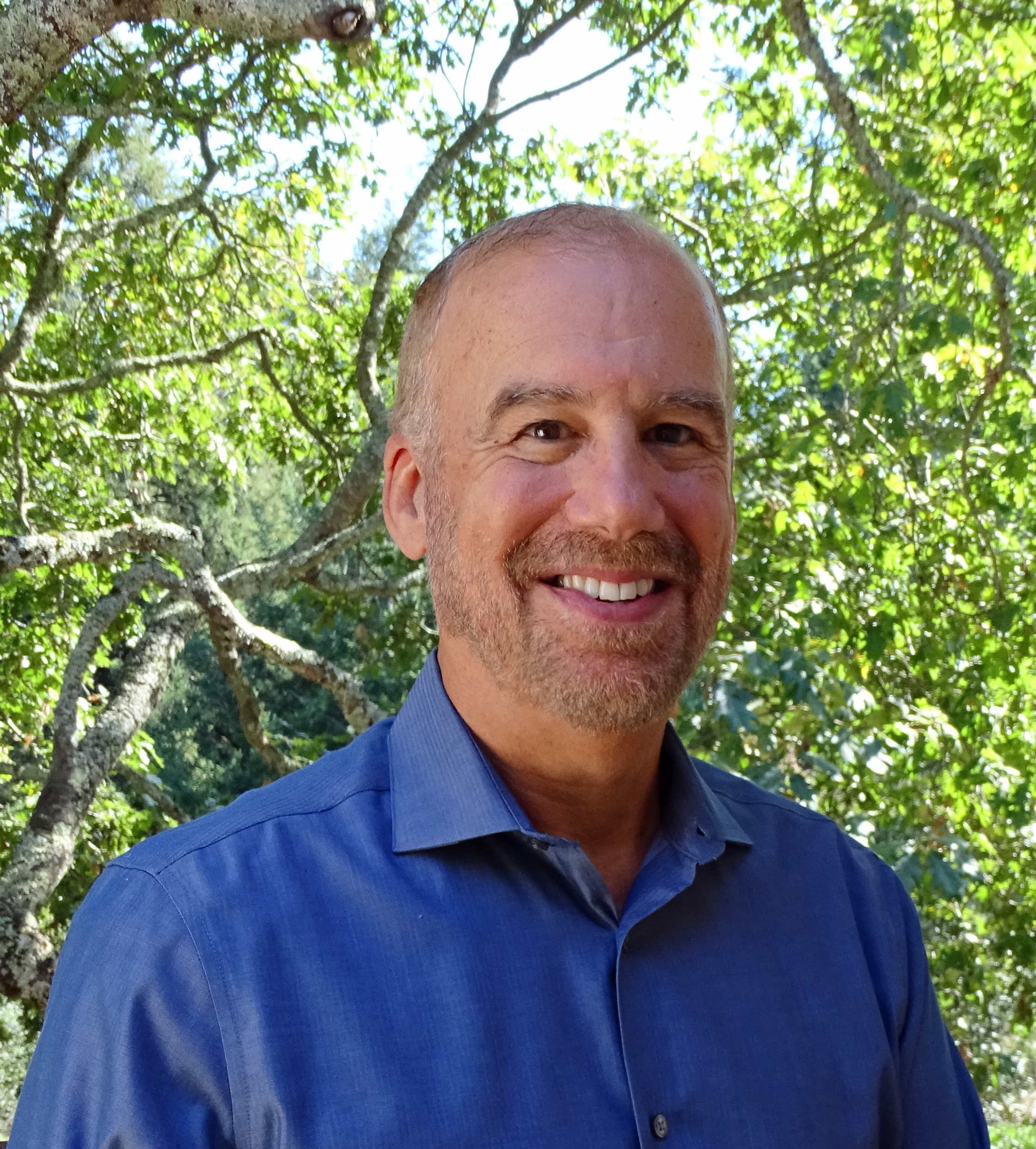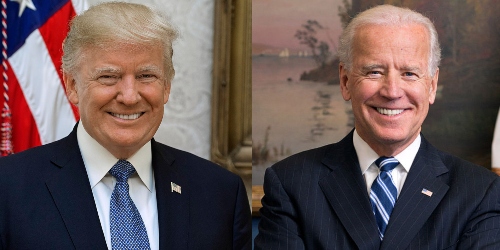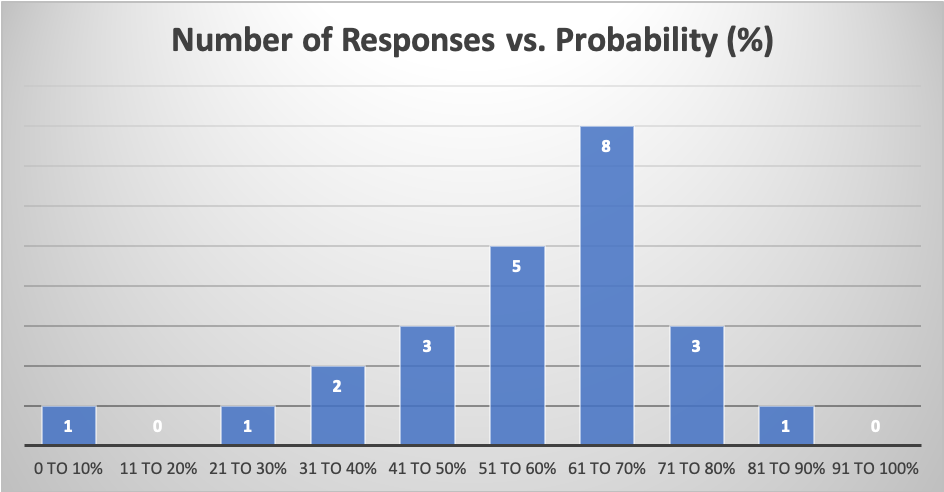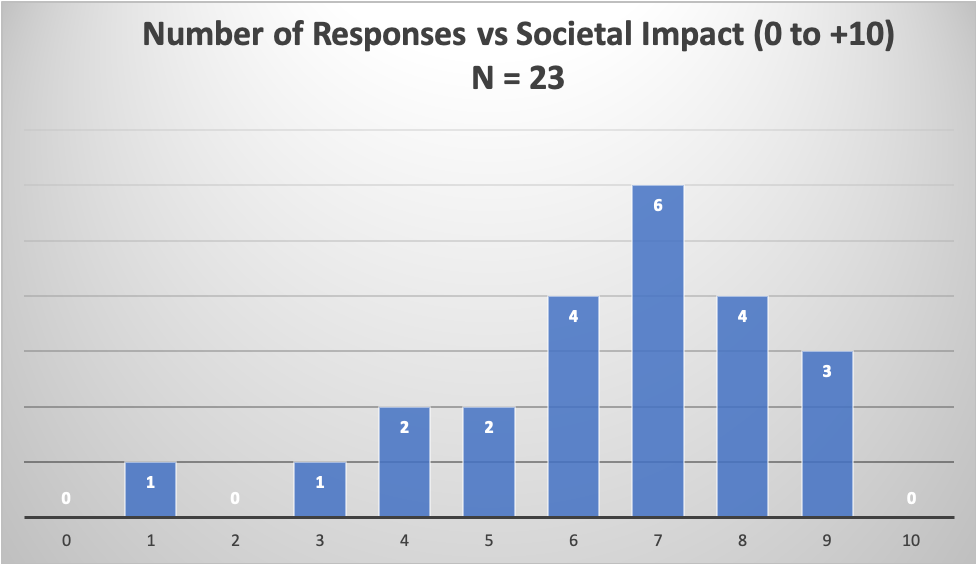TechCast is pleased to announce the publication of Prof. Halal’s latest book — Beyond Knowledge. Below is the Table of Contents, the book cover, and Chapter One. The book is available here at Amazon
Beyond Knowledge has a flood of reviews on Amazon and they are all 5-stars. We are delighted to note that the book has been rated #1 best seller in the following Amazon categories: Business & Money, Social Sciences, Business Planning & Forecasting, Knowledge Capital, Consciousness & Thought, Conduct of Life & Spirituality, Philosophy & Spiritual Growth, Personal Transformation, Evolution.
Endorsements from Leading Figures:
Hazel Henderson — “A gem”
Michael Lee — “Best since Alvin Toffler’s Future Shock”
Mark Schutzman — “A Masterpiece of human thought”
Professional reviews from publications:
- “I’ve always thought that the problems in the world need to be
solved through politics and spirituality. How delightful to find that Beyond Knowledge does exactly that. It is an extraordinary perspective on why there are so many problems on Earth. Indeed, it suggests that the world could be poised on the cusp of transformation from a society based on knowledge to one guided by consciousness.” Reviewed by Tommy Wong for Readers’ Favorite - “An essential guide for individuals, governments, businesses, religions, and educational institutions. Provides substantial solutions and cases for their effectiveness to resolve the mega-crisis that confronts humanity. An excellent, well-researched, and informative read that is hard to put down; an x-ray of contemporary society and what shapes it.” Reviewed by David Reyes, Book Commentary
- “Visionary, balanced, pragmatic, a gold mine of information, and impressively thorough. A refreshing change from the daily staple diet of doom and gloom we are bombarded with from all directions. I am eternally grateful for this olive branch of hope. I thoroughly enjoyed reading it and recommend Beyond Knowledge to anyone looking for an intelligent and informative analysis of our present and future.” Francis Mont for Readers’ Favorite
Comments from Readers:
- “I think you are right on. People filter the facts based on their beliefs and opinions. It’s all subjective. We are acting like adolescents. Can’t wait to read the whole thing. I want to order my copy early.”
- “Professor Halal’s book about a new paradigm of consciousness will have implications for all areas of human endeavor. “
“If you are looking for enlightenment, BUY THIS BOOK. Beyond Knowledge provides a brilliant approach for coping with a rapidly changing world.”
“Prof. Halal’s vision is intriguing and thought-provoking. I’m anxiously awaiting the rest of the story from his upcoming book.”
“Beyond Knowledge tackles our current, complex, confusing world in a way that allows readers to understand the future. People will be standing in line to review this book.”
See the video on Beyond Knowledge
About the Cover
The stunning cover symbolizes a modern goddess giving humans a vision of “global consciousness” needed to develop a mature world. The goddess is female to recognize that surviving today’s massive threats requires the feminine qualities of wisdom, cooperation and love. She also represents the younger generation that must lead this transformation.
Beyond Knowledge:
How Technology Is Driving an Age of Consciousness
Contents
Forewords Hazel Henderson, Michael Lee and Amy Fletcher
Preface Blessings of Maturity
One Introduction:
The Noosphere is Here
Two Promises and Perils of the Technology Revolution:
Eating Fruit from the Tree of Knowledge
Three Uniting Science and Spirit:
Technologies of Consciousness
Four Democratic Enterprise:
Collaboration Between Business and Society
Five A New Social Contract:
Centrist Politics and Government Markets
Six Virtual Education:
The Uneasy Shift from Teaching to Learning
Seven From Religion to Spirit:
The Ultimate Technique of Consciousness
Eight Managing Our Minds:
Living and Working in Spirit
Nine Toward a Global Consciousness:
Start by Being Responsible
Ten Evolution’s Climax:
The Flowering of Human Spirit
Excerpt from Chapter One
Introduction: The Noosphere Is Here
The Jesuit anthropologist, Pierre Teilhard de Chardin, has long fascinated us with his vision that the world would evolve into a “noosphere,” [1] a great web of consciousness enveloping the Earth. It seemed a lovely but distant ideal, yet the Digital Revolution has now made that dream a reality. As this book will show, the noosphere is here today, and it promises to transform our lives, our work, social institutions, the global order, and our very minds and souls.
Not too long ago, we relied on telephones and newspapers to communicate. We now use two billion personal computers (PCs), 14 billion cell phones and laptops, and two billion TVs. The information flows through 30 million Internet servers, 3,500 space satellites and almost one million miles of undersea cables. This planetary layer of digital connections knits eight billion people into a living overlay of thought – the noosphere.
Although the world has an abundance of communication, it is not a very happy place. Just as the Gutenberg printing press unleashed a flood of information that led to wars and the Protestant Reformation, today’s deluge of knowledge has brought a “post-factual” wave of nonsense, government gridlock, raging pandemics, the climate crisis and other global threats. We will see later that a “global consciousness” able to handle such threats is likely to emerge soon. But, in the meantime, the noosphere has highlighted the limits of knowledge.
Beyond Knowledge
You would think we should have been enlightened by the past two decades of the Knowledge Age, so why do people seem badly misinformed, emotional and unreasonable? Despite the great evidence readily available, many do not believe in evolution, climate change, vaccination and other established science.
Even national policies are often based on emotions, as when the English left the EU and Americans elected President Trump. Political “rebellions” like this are common, of course, with their own logic and patriotic goals. But today, the technology can amplify disinformation. Trump, for instance, gained power using digital media to deny inconvenient facts as “fake news” and “conspiracy theories.” An entire cottage industry has sprung up to warn of this “Assault on Intelligence,” “The Death of Truth,” “A World Without Facts” and “Truth Decay.” [2]
It does not help that large parts of the public embrace this confusion. TV and the Internet have produced what has been called “the dumbest generation” with a disregard for general reading in favor of news sources echoing their beliefs. [3] Here are some choice bits of willful ignorance:
- The US ranks near the bottom of nations whose citizens believe in evolution, with less than 40 percent saying they accept the science. [4]
- Two-thirds cannot name the three branches of government. [5]
- As of early 2021, more than 70 percent of Republicans still believe the presidential election was stolen, after this was discredited by the courts and Republican officials themselves.
Extensive studies confirm that attitudes, beliefs and values are shaped by a variety of well-known biases, allegiance to political parties and other extraneous factors. [6] Even hard-nosed business people admit that bias in decision-making is a major problem. [7] Demagogues use self-serving fantasies to blind people to reality and mobilize them into violence. [8] It seems that objectivity is a thin veneer shielding base impulses as well as noble motives.
Norman Lear, the famous American TV producer, said: “We just may be the most-informed, yet least self-aware people in history.” [9]
This dilemma poses one of the great ironies of our time. The Digital Revolution has created a wealth of knowledge that is almost infinite. The smartphone alone has made the world’s store of information available at the touch of a finger. There is no shortage of knowledge, but the power of facts is badly limited. Knowledge cannot tell us what is worth doing, or what is right morally and what is wrong. Rational logic does not explain why people are altruistic or selfish, kind or cruel, enlightened or ignorant. Knowledge can never replace love, wisdom or a guiding vision.
This rule of unreason pervades life, and it is rampant in politics. The US government, for instance, has been locked in stalemate for decades, though Congress has more knowledge than it can handle. Emotional issues like abortion, gun control and immigration supported by strong majorities have been studied to death. Still, gridlock persists because of conflicting values, reluctance to compromise, and hunger for power – issues that lie beyond knowledge. Senator Ben Sasse worried, “We are living in an America of perpetual adolescence.” [10]
This political stalemate is largely responsible for the poor US response to the coronavirus pandemic. China, Singapore, South Korea and other Asian nations weathered the storm reasonably well. But the US mismanaged it so badly that Americans fear structural weaknesses in government could inflict more damage from other crises. The pandemic brought these systemic flaws on vivid display for all to see. People are frightened and searching for solutions.
Many are ready to break from a past that no longer works. The World Economic Forum called for a “great reset” in all spheres of society. The result is a loss of faith in the reigning logic, or ideology, of money, power and self-interest. These values have their place, but they seem unable to address the crises of our time. Climate change is starting to bite, more pandemics are likely, inequality is growing, and there is a growing sense that the status quo is not sustainable. The conflict over these complex issues seems overwhelming because, once again, they are beyond knowledge. They hinge on stark differences in consciousness.
This existential threat has shattered confidence in what Francis Fukuyama proclaimed to be “The End of History” – the fall of communism and the triumph of capitalism and democracy. [11] A variety of voices suggest this crisis could trigger a “collapse of capitalism,” roughly like the “collapse of communism” in the 1990s. It also stems from the same fatal flaw – an inability to adapt to a changing world. Communism could not meet the complex demands of the Information Revolution, and now capitalism is failing to adapt to this confluence of global crises.
Next Step in Social Evolution
What is going on here? Why is the US, the most prosperous and best-educated nation in the world, so inept? How can great knowledge produce such misguided behavior?
These problems can be best understood as the passing of the Knowledge Age and the opening of an unusual frontier – consciousness itself. Knowledge remains crucial, of course. But today’s explosion of smartphones, social media and artificial intelligence (AI) has created a post-factual mess governed by raw emotions, distorted values and outmoded beliefs. An Age of Consciousness is starting now, though one may not like its current form. Whatever one thinks of former President Trump, almost all would concede that he is brilliant at creating an alternative reality. He is a master at shaping consciousness.
A “beyond knowledge test” helps clarify the role of consciousness. If some problem remains unresolved due to values, beliefs, self-interest or other subjective issues – climate, abortion, gun control, for example – the solution lies beyond knowledge. This simple test highlights how the disorders that plague our time are not rational problems to solve by reason. They involve all the messy mental baggage of normal people, so they must be addressed by altering consciousness. That is where the problems lie, and it is also where the solutions are to be found.
This is a bold claim, but that is roughly how the shift to a world of knowledge looked when the Information Revolution began a few decades ago. Back when computers filled rooms, I recall telling people that we were entering a world of personal computers, and the typical response was, “Why would anyone want a personal computer?”
Yet in 2000, PCs were everywhere, books on knowledge became rife and the majority of jobs involved managing knowledge. I am equally confident that an Age of Consciousness is opening up today, and we simply do not yet understand this intriguing new frontier.
Beneath this tectonic shift in consciousness is the driving force of artificial intelligence, the most powerful agent of change today. Sundar Pichai, CEO of Google, said “AI is probably the most important thing humanity has ever worked on … more profound than fire or electricity.” [12] The advance of AI is automating knowledge work, threatening to eliminate roughly half of all jobs and posing one of the most perplexing questions of our time: What lies beyond knowledge? As Chapter three will explain, everything beyond knowledge is consciousness. This historic shift in social evolution is illustrated by the graph below.
I have struggled with this problem for years, and the result is Figure 1 showing what I call the “Life Cycle of Evolution (LCE).” Similar graphs have been sketched in general terms, [13] but this is the first to plot the long-term evolutionary trend using real scales and real data. The logarithmic time scale is needed to encompass the billions of years at the start of life, as well as just decades today. Without a log scale, the shape of the LCE would not be recognizable; the trendline would run flat and make a sharp 90 degree turn straight up.
Figure 1
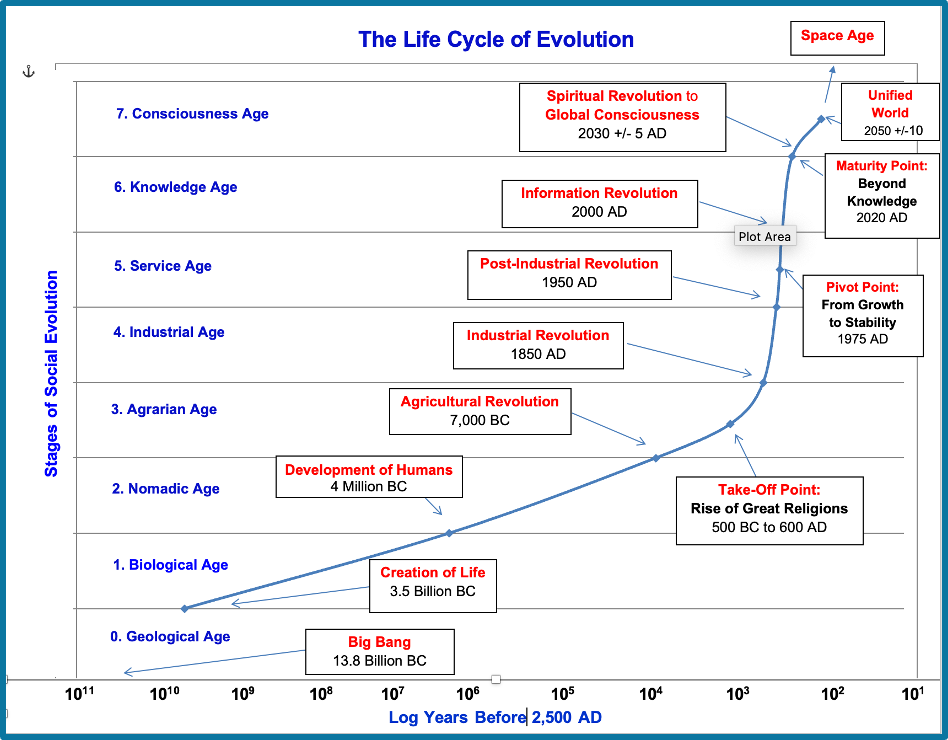
Above the fray, there is a direction to this accelerating evolutionary process, and the logical next step is consciousness. Roughly four million years were needed to found Agrarian Civilizations. Nine thousand years to invent Industrial Society. One hundred years for the Post-Industrial Era. Five decades to a Knowledge Age. And the past 20 years to an Age of Consciousness.
Today, the world is poised at the cusp of transformation from a society based on knowledge to one guided by consciousness. This extraordinary acceleration through previous stages reveals how the planet suddenly came alive in a flash of awareness. The entire rise of civilization occurred in an extremely tiny fraction of one percent in the LCE. Historian Arnold Toynbee foresaw it as the “etherealization of life.” [14] Teilhard de Chardin envisioned planetary consciousness to be the natural apex of evolution – the Omega Point. [15]
Consciousness has been around throughout history, of course, so what is really new? This transition can be understood through a similar evolutionary shift to the Knowledge Age. Information has also been used throughout civilization, of course. But the Knowledge Age began when digital technology matured about two decades ago into the most powerful force on Earth, occupying the bulk of the labor force, and our very minds.
In a similar way, shaping consciousness is now a powerful technology, although barely understood, and it is changing the world. Think of the explosion of opinion, disinformation and emotion blasting out of loudspeakers like Facebook and Twitter. Anybody can use social media to shape public opinion, for better or worse. Politicians around the globe struggle to infiltrate the information systems of their adversaries, and they casually dismiss criticism as fake news. One analyst framed the problem this way: “In the past, wars were conducted with weapons. Now it’s through social media.” [16] The great challenge now is, how to shape a workable global consciousness out of this morass of differences to support almost eight billion people coexisting on this single planet?
This historic transition also poses enormous threats that seem almost impossible. Climate change and the entire constellation of end-of-the-world challenges comprise what I call the “Global MegaCrisis,” or the “Crisis of Global Maturity.” My studies conducted with a colleague, Michael Marien, found that roughly 70 percent of the public thinks the present world trajectory will lead to disaster. Ask anyone off the street and you will probably get the same answer. People have deep fears over today’s failures in governance, and they attribute it to a lack of leadership, vision and cooperation.
The late Stephen Hawking worried about “widening inequality, climate change, food, decimation of species, epidemic disease, acidification of the oceans. This is the most dangerous moment in the development of humanity, and our species must work together.” [17]
The Technology Revolution will add even greater threats. The next chapter forecasts how advances across the technology spectrum are providing vast benefits, but also the enormous problems of “eating fruit from the biblical Tree of Knowledge.” Smart cars, for example, will pass on the faults of smartphones. “A car is like a cell phone, and that makes it vulnerable to attack,” said Jonathan Brossard, a security engineer. Many are horrified at the prospect of AI-controlled weapons turning on people. Now, ponder what could happen when billions of intelligent devices are wired into the Internet of Things?
The great S-curve formed by these eras is the universal symbol of the lifecycle. All living systems pass through this same process of birth (start of the S-curve), growth (upward phase), and maturity (leveling off) – a culture of bacteria, a growing child or the life of a planet. From this systems view, the Global MegaCrisis is an infinitely larger version of the same crisis of maturity that transforms teenagers into adults. Anyone who has raised children knows that teens may be fully grown physically and “know everything.” But the typical teenager has not learned to control their impulses, struggles with inner doubts and can’t cope with a confusing world.
That is roughly the state of our world today. Industrialized nations are fully developed, awash in information and with enough armaments to destroy us all. Yet they lack the wisdom to address climate change, regulate economies safely, curb terrorism and solve other nagging problems. As I will show in the next chapter, many people think we are heading toward a disaster of catastrophic proportions, and they have little faith in their leaders.
Consciousness is not the same as “goodness,” as is often thought by New Age enthusiasts. Like knowledge, consciousness encompasses all in its domain – including hate, conflict and delusion.
At some point, the stress becomes so severe that most teens eventually find the courage to grow up and become responsible adults. In a roughly similar way, the MegaCrisis is humanity’s challenge to become a mature civilization. The world is being forced to grow up and to develop a sustainable global order – or perish. This passage to maturity is more than a historic challenge; it is also a historic opportunity. Like adolescence, surmounting this painful process can lead to a better future. How could we let this singular moment pass?
Triumph of Human Spirit
This evolutionary perspective helps us understand how a global consciousness is emerging today to resolve these threats and create a mature civilization. More than a theory, the chapters ahead will show how people are changing their lives, their work, social institutions and global mindset. I make a point of fleshing out these concepts with details, evidence, supporting examples and steps to consider. We will see how an Age of Consciousness is likely to develop into a tangible, productive and more meaningful way of life.
Consciousness is the inner terrain in which we live our lives, and it is changing rapidly to cope with the slightly crazed demands of high-tech life. People are embracing mindfulness, living with nature and using psychedelics to relieve stress, provide insight and improve health. I call these “technologies of consciousness” – methods that people use to guide their awareness, mood and understanding. The evidence shows that these techniques can instill the values of cooperation, understanding and compassion that are essential to a unified globe.
The main chapters outline how shifts in public consciousness are transforming the major organs of society – government, business, universities, religions and other institutions. In each case, I will show that a small avant-garde is quietly bringing a mature awareness to these varied facets of public life. Drawing on numerous examples, I show how business is turning democratic, government can be lean and responsive, education becoming student-centered, and religions moving from doctrine to a personal relationship with the spiritual world.
For instance, the Business Roundtable announcement that firms should serve all stakeholders is truly historic. The New York Times called it a “watershed moment … that raises questions about the very nature of capitalism.” Leading corporations like Johnson & Johnson, IKEA, Nucor Steel, Nortel, and Unilever collaborate with employees, customers, suppliers and governments to solve tough problems and create value for the company and stakeholders. Larry Fink, who runs the biggest investment firm in the world (Black Rock), directed the companies he owns to address social issues, even including climate costs in their operations.
These ideas may be reasonable, but many doubt such dramatic change is possible. In 2020, the “Black Lives Matter” movement began shifting attitudes around the world, illustrating that consciousness is changing even now. This push for racial justice is led by young people across the political and racial spectra, the cohort that favors global consciousness. It is reminiscent of the “Me Too” movement that ousted sexual predators, and the passing of gay marriage laws a few years ago. Big change arrives when the time has come.
The power of global consciousness provides the key to resolving the multiple crises of today. Each stage in social evolution has been propelled by revolutions – the Agrarian Revolution, the Industrial Revolution, Post-Industrial Revolution and, most recently, the Information Revolution. As my graph of the LCE lays out visually, we are now in the beginning throes of what I call a “Mental/Spiritual Revolution” to kick-start the Age of Consciousness. In short, it appears the world is heading toward some type of historic shift in consciousness, a collective epiphany, a new mindset, code of global ethics or a spiritual revolution.
Civilization survived the fall of Rome, the Dark Ages, World Wars I and II, and a cold war bristling with nuclear weapons, and it seems likely to survive the Global MegaCrisis.
Such heroic change may appear daunting, especially at a time when hostilities seem endless and environmental disaster looms ahead. That is often the case before upheavals. Nobody thought the Soviet Union would collapse until it actually did. The evidence outlined throughout the book supports this evolutionary trend.
The reason this claim seems optimistic, perhaps even foolhardy, is that we have no experience in global consciousness. Huddled in our small section of the universe, humans have little conception of planetary evolution, much less the transition to a unified world. Our understanding is roughly similar to that of a naïve person who first witnesses the agony of a human birth or a teen struggling to adulthood. Without previous experience, these painful transitions would seem awful, too hard to bear. Yet they are entirely normal and usually successful.
So too could our passage to global maturity develop into a fairly normal transition in a few years. The LCE graph shows an accelerating trend of 100 years for the Industrial Age to transform into the Service Age, and 50 years to transform again into the Knowledge Age. Extrapolating this trend suggests the Age of Consciousness will most likely arrive 20-30 years after the Knowledge Age. That is just about what we are seeing today. I estimate the Age of Consciousness started about 2020 when the “Big Lie” demonstrated the power of sheer beliefs to mount an insurrection against the US Government. This historic event made it abundantly clear we were literally living beyond knowledge now.
Drawing on these projections and other evidence, my TechCast studies suggest a roughly 55 percent probability that a Mental/Spiritual Revolution to global consciousness will arrive about 2030 +/- 5 years. I am as confident in this forecast as I was that the Knowledge Age would arrive about 2000. The 55 percent probability reflects that divided opinion, doubts, and fears over this existential point in history. Civilization is poised at a knife edge teetering between global maturity and societal collapse.
A mature global order will still bear the normal human failings, but it will make our current strife look as primitive as the brutal reign of kings in the feudal ages. This may sound too good to be true, yet these trends suggest we will see the beginnings of a unified planet over the next decade or so, and the triumph of human spirit, once again.
References
[1] Pierre Teilhard de Chardin, The Phenomenon of Man (New York: Harper, 1955)
[2] Hayden, The Assault on Intelligence (New York: Penguin, 2018); Anne Applebaum, “A World Without Facts” (Washington Post, May 20, 2018); Jennifer Kavanagh and Michael Rich, Truth Decay (Santa Monica: The Rand Corporation, 2018)
[3] Mark Bauerian, The Dumbest Generation (New York: Penguin, 2008)
[4] Ker Than, “US Lags … Acceptance of Evolution” (Live Science, Aug 11, 2006)
[5] Susan Jacoby, The Age of American Unreason (New York: Pantheon, 2008)
[6] Elizabeth Kolbert, “Why Facts Don’t Change Our Minds” (The New Yorker, Feb 27, 2017); Yuval Harari, “People Have Limited Knowledge. What’s the Remedy? Nobody Knows” (New York Times, Apr 18, 2017)
[7] Tobias Beer et al., “The Business Logic in Debiasing” (McKinsey, May 2017)
[8] Harari, “Why Fiction Trumps Truth” (The New York Times, May 24, 2019)
[9] “Norman Lear calls for leap of faith” (The New Leaders, May/June 1993)
[10] Ben Sasse, The Vanishing American Adult (St. Martin’s, 2017)
[11] Ishaan Tharoor, “The Man Who Declared ‘The End of History’ Fears for Democracy’s Future” (Washington Post, Feb 9, 2017)
[12] World Economic Forum (Jan 24, 2018)
[13] For instance, the field of “big history” has studied similar time scales. See ibha.wildapricot.org (June 2, 2017)
[14] Arnold J. Toynbee, A Study of History (Oxford Univ. Press, 1960)
[15] Pierre Teilhard de Chardin, The Phenomenon of Man (New York: Harper Perennial 1976)
[16] “Quote of the Day” (New York Times, Sep 13, 2019)
[17] Stephen Hawking, “This Is the Most Dangerous Time for Our Planet” (The Guardian, Dec 1, 2019)
Simulated Interview by AI
I am indebted to the genius of Gerd Leonhard for producing this simulated interview using some AI system that is unknown to me.
You can hear the interview by clicking here.

Presentation at Society of the Emeriti
George Washington University, November, 2024
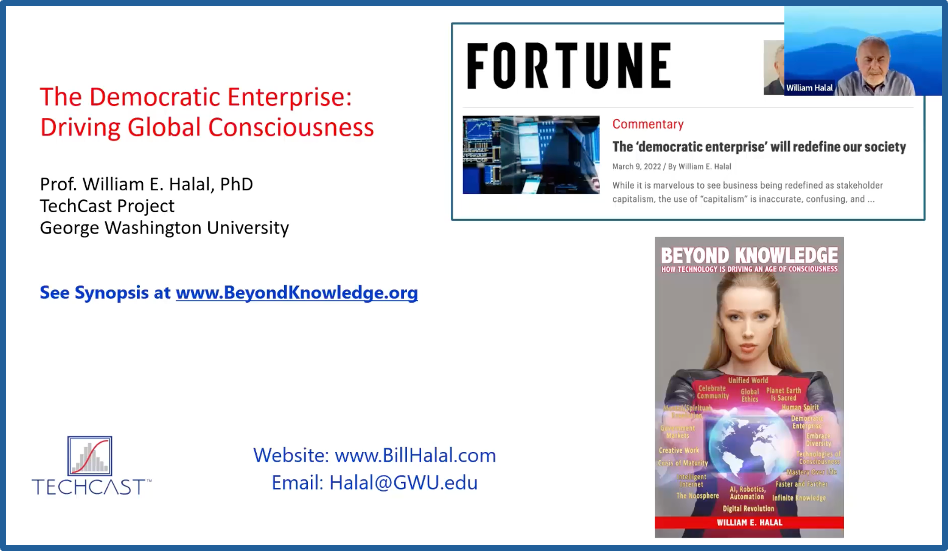
Geoff Holland Interview on the Planetary Press
The full interview is available here.
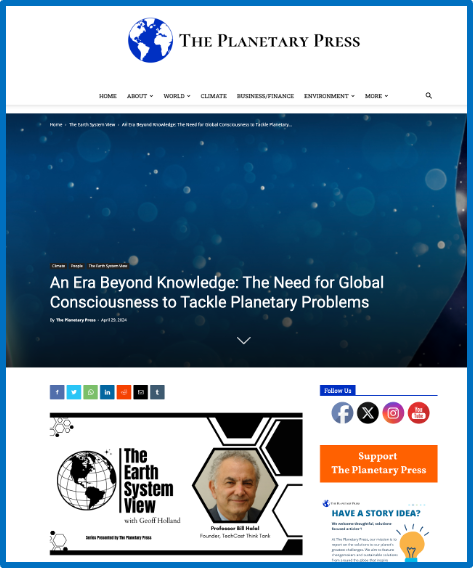
Interview on EDaily Newspaper, Seoul
Korean culture is inherently strategic, so EDaily was fascinated by my analysis of the American/Global MegaCrisis.
The original article is available HERE
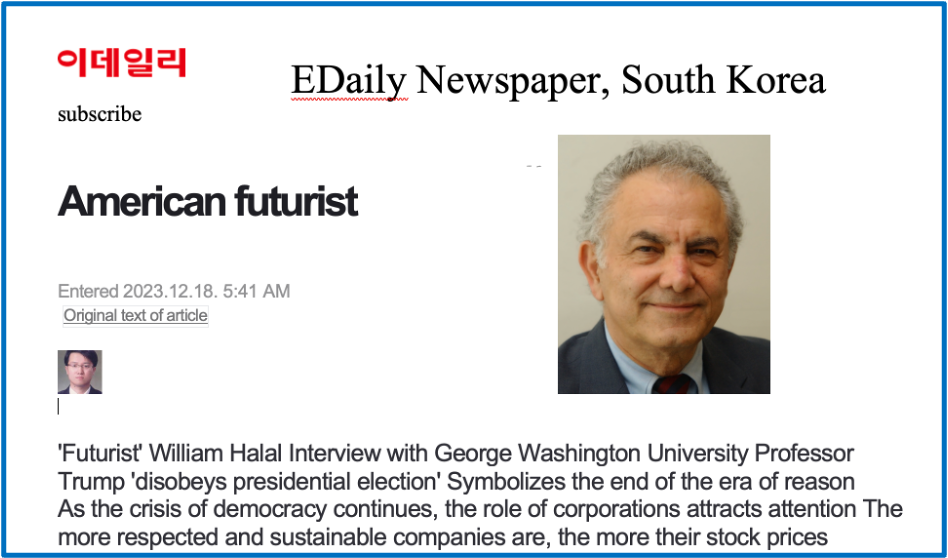
TechCast at the Economist-Google AI Conference

From Doom and Gloom to Faith and Hope
Our recent issue on doom and gloom has been posted on the exciting website of Gerd Leonhard, and the previous “Talking Across Differences” study is posted there also. TechCast is grateful to Gerd for supporting our work.

Talking Across Differences:
A Paradigm for Raising Consciousness
Published on Gerd Leonhard Media
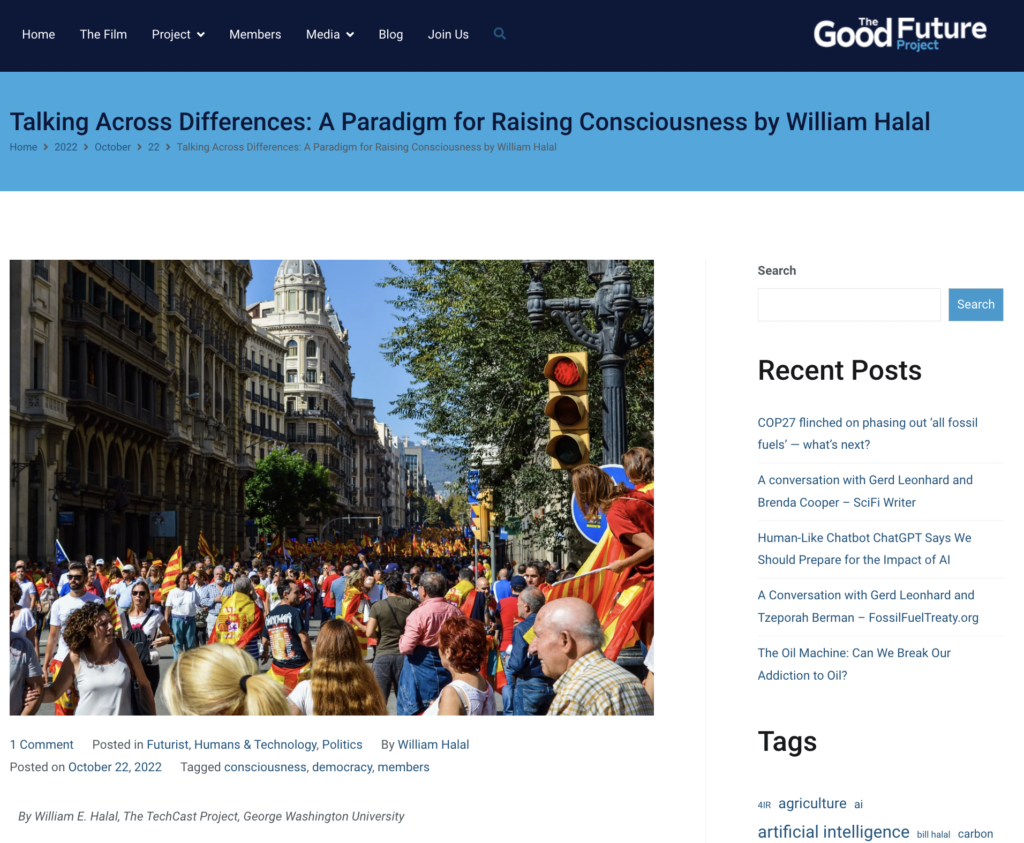
Victor’s review can be accessed here
Beyond Knowledge at WFSF in Berlin, 2021
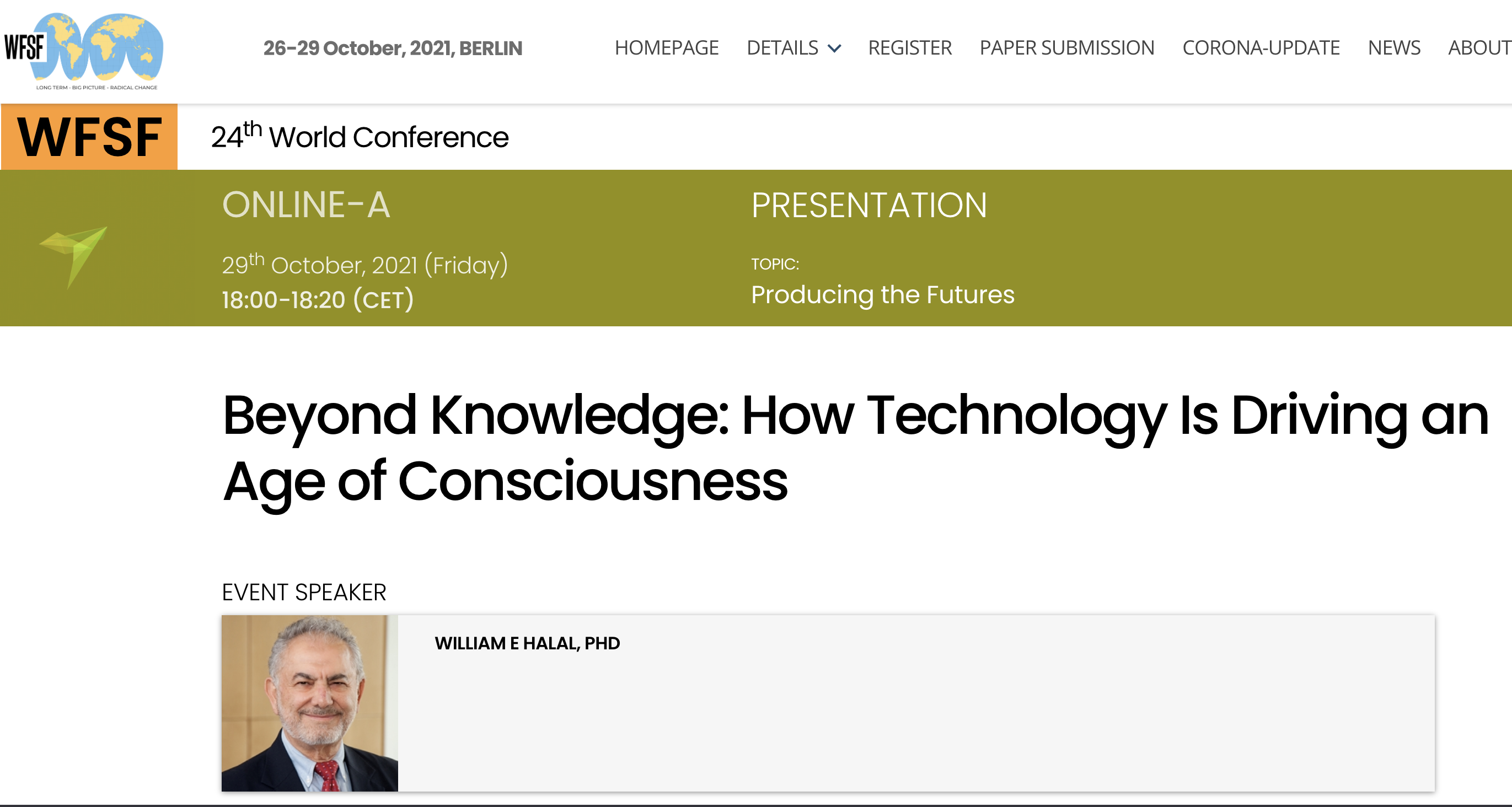
Bill Speaks on Redefining Capitalism
At the Mexican Business Summit
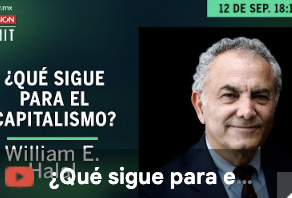
The talk can be seen Here
Bill on Futures TV
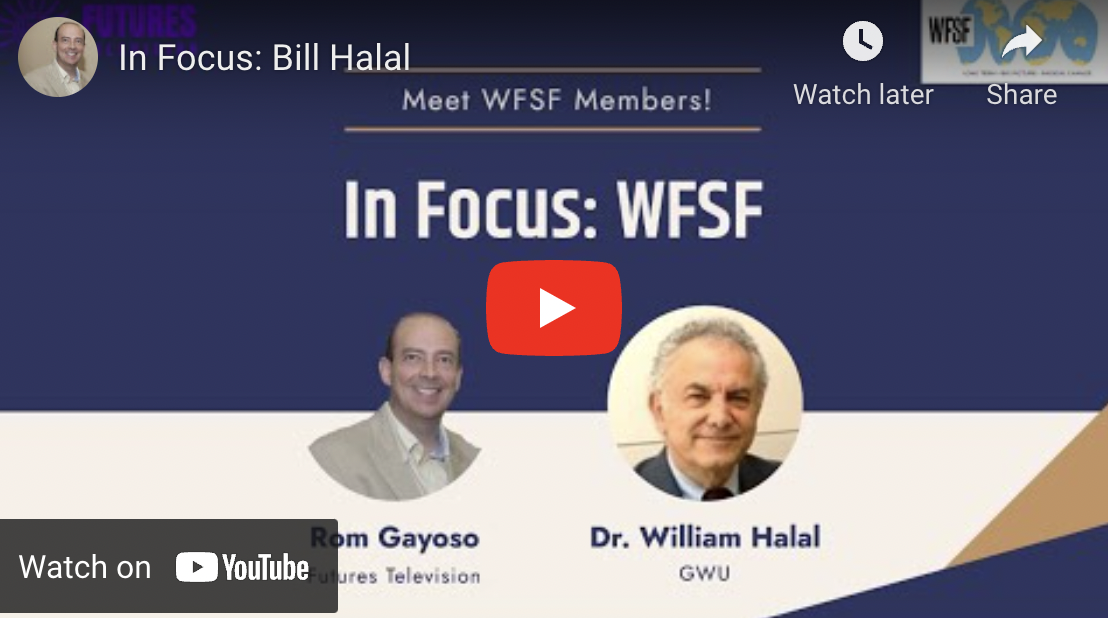
Gerd Leonhard and Bill Halal
on
Talking Across Differences

See the podcast here
The podcast on Spotify is here.
The post on SoundCloud is here
The post on Apple is here
Visionary Leader Award

TechCast at The Futures Conference, Finland
TechCast on the Guy Rathbun Show
Our recent post on the Supreme Court’s Roe vs Wade decision was discussed on the Guy Rathbun show.

Beyond Knowledge on the Gerd Leonhard Show
Gerd invited Bill to be his first guest on his show and the result is a great analysis of life Beyond Knowledge.


Click here for the podcast



See the full article here
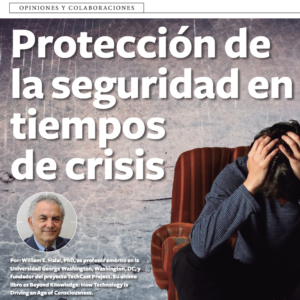
Protection and Security in a Time of Crisis (Armas Military Magazine of Mexico, Sep-Oct 2021)
The Guy Rathbun Show


The Cuyamungue Institute show.

The Alan Freedman Show

Bill appeared on this marvelous podcast hosted by the exuberant, joyous and prescient Alan Freedman. His introduction made me laugh.
Alan has a crystal sharp view of the world’s dilemmas, and he abounds in faith that the mystery of life’s progress remains valid.
We had fun going through the key points in Beyond Knowledge. It was a celebration of the possible — and most likely the reality.

You can find the podcast here.
Sara Troy on Self Discovery Media

The podcast can be found here.
The Monterrey Institute of Technology, Mexico

Beyond Knowledge on Medium

Bill published an article on Medium titled
“An Age of Consciousness Is Here, and It Changes Everything.”
Al in the Afternoon Show

Prof. Halal has a regular guest on Al Travis’s show. Here are videos of his appearances:
8-25-21 https://fb.watch/8aQdm4xArq/
9-1-21 https://fb.watch/8aQrRgtpw1/
9-8-21 https://fb.watch/8aQxezHglK/
9-15-21 https://fb.watch/8aQC_UqGO-/
The Jim Masters Show

he discussed his new book.
A video of Bill’s appearance can be found here.
Beyond Knowledge on Future Pod

Prof. Halal was interviewed by Peter Hayward for a podcast published on Future Pod.
The interview can be heard here.
Keynote on Autonomous Vehicles Conference
TechCast gave a keynote speech at an international conference on transportation featuring autonomous cars on November 2, 2020. The conference was organized by the Intelligent Transport Society of South Korea.
TechCast’s Bill Halal organized his talk around the five principles of Global Consciousness.
TechCast Briefs Angel Investors



